Welcome to the annual Year in Review for WP Fusion 🎉
It feels like I just finished writing 2022 in Review, and here we are again 🎢
In case you’re new here–
#What is WP Fusion?
WP Fusion is a WordPress plugin for deeply integrating your website with your CRM or email marketing system. It’s often used on membership or e-commerce websites to collect and organize customer data, trigger automated emails and workflows, and personalize the WordPress user experience using CRM data.
This helps small business owners spend less time, making more money, from happier customers. It’s pretty great, but don’t just take our word for it.
WP Fusion launched in January 2015, so we are entering our tenth year in business.
WP Fusion is developed by Very Good Plugins. We’re a small distributed team building and supporting open source plugins for WordPress, FreeScout, and other platforms. Some people say they’re Very Good.
As of January 2024, WP Fusion powers 28,472 websites and generates about $800,000 / year in revenue.
In the spirit of open source, I’ve been publishing these transparency reports since 2017. In them, I go over what we accomplished in the prior year, plugin usage stats, revenue metrics, support metrics, and what we’re working on for the coming year.
Let’s dive in.
#Contents
#Plugin updates and new features
We released 63 updates to the core WP Fusion plugin in 2023, generally with feature releases every Monday and then fixes (if necessary) later in the week. We released 20 updates across our six Plus addon plugins.
#New CRMs
WP Fusion now supports 58 CRMs and marketing automation platforms. In 2023 we added support for:
#New plugin integrations
In 2023 we added support for 14 new plugins, bringing the total supported by WP Fusion to 163.
In order of release:
- WooCommerce Gravity Forms Product Addons: collect additional WooCommerce product data via Gravity Forms and sync it to the customer’s record in your CRM.
- Pretty Links: Apply tags in your CRM when links are clicked.
- Thirsty Affiliates: Apply tags in your CRM when links are clicked.
- WP All Import: Sync randomly generated passwords to the CRM during user imports.
- Object Sync for Salesforce: Sync multiple object types with Salesforce in addition to contact records.
- WooCommerce Product Options: Sync product options and personalization details with custom fields in your CRM.
- Download Manager: Protect downloadable files using tags in your CRM.
- UsersWP: Collect data from your users at registration and sync it with custom fields in your CRM.
- Blockli Streamer: Apply tags based on engagement with Blockli Media Tools videos.
- FluentBooking: Sync appointment details and apply tags based on bookings.
- GeoDirectory: Apply tags and trigger emails when directory listings are approved or expired.
- WP User Manager: Collect data from your users at registration and sync it with custom fields in your CRM.
- Forminator: Sync lead form submissions with contact records in your CRM.
- SureMembers: Apply tags based on membership level changes, and auto-enroll users into membership levels via linked tags.
#Usage insights
When WP Fusion calls home to check for a plugin update, it includes some basic info about the customer’s site, including the name of their connected CRM, and which integration modules are active in WP Fusion. This helps us with support and feature development, and also lets us run reports on the most popular CRMs and integrations.
For this year’s reports we’re using a sample size of 20,886 sites that have called home for an update in the last 12 months, where WP Fusion has been fully set up (connected to a CRM).
#CRM popularity
What are the biggest changes from 2022?
- HighLevel: 2.9% → 4.46%
- FluentCRM: 13.14% → 14.92%
- HubSpot: 6.75% → 7.7%
- ActiveCampaign: 27.11% → 26.08%
- Brevo: 2.26% → 1.05%
- Zoho 2.65% → 1.96%
- Drip: 3.28% → 2.72%
I’m not surprised to see HighLevel growing the fastest. It’s a solid product that’s been adding a ton of new features. It’s one of our most requested integration categories as well.
FluentCRM also continued growing. Interestingly, even though WP Fusion supports connecting to FluentCRM on a subdomain, 87% of our FluentCRM customers are using it on the same site. That’s a good sign— it means despite FluentCRM’s many native integrations, people are still finding value in the extra features provided by WP Fusion.
This is the first year ever that ActiveCampaign has decreased. It also coincided with us leaving ActiveCampaign for FluentCRM. For us it was due to a 400% price increase in August, combined with unreliable API performance and poor support. I’m not surprised that others made the same calculation.
#Most popular plugin integrations
We can also see which integration modules are active in WP Fusion, to get a sense of the most popular integrations.
#Ecommerce
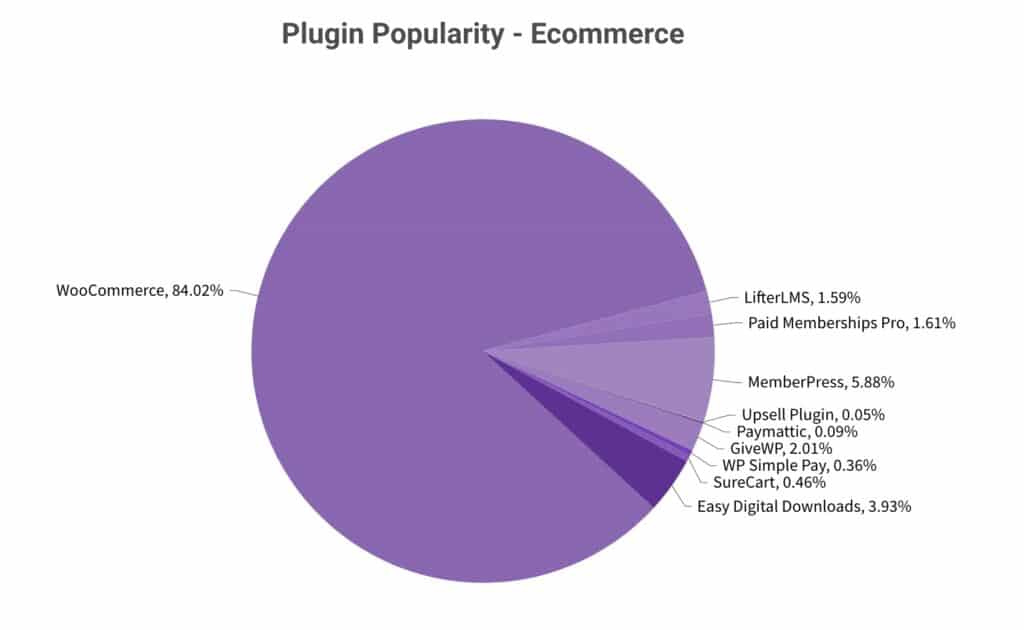
We didn’t include an Ecommerce chart in prior years because WooCommerce has such an outsize influence on the ecommerce category, but this year we added a SureCart integration which has been quite popular, and I was curious to see how many people are actually using WooCommerce alternatives for payments.
In the case of Paid Memberships Pro and LifterLMS, both have the ability to take payments via WooCommerce or their own payment gateways. For this chart I’ve excluded any site that also has WooCommerce installed.
#Membership
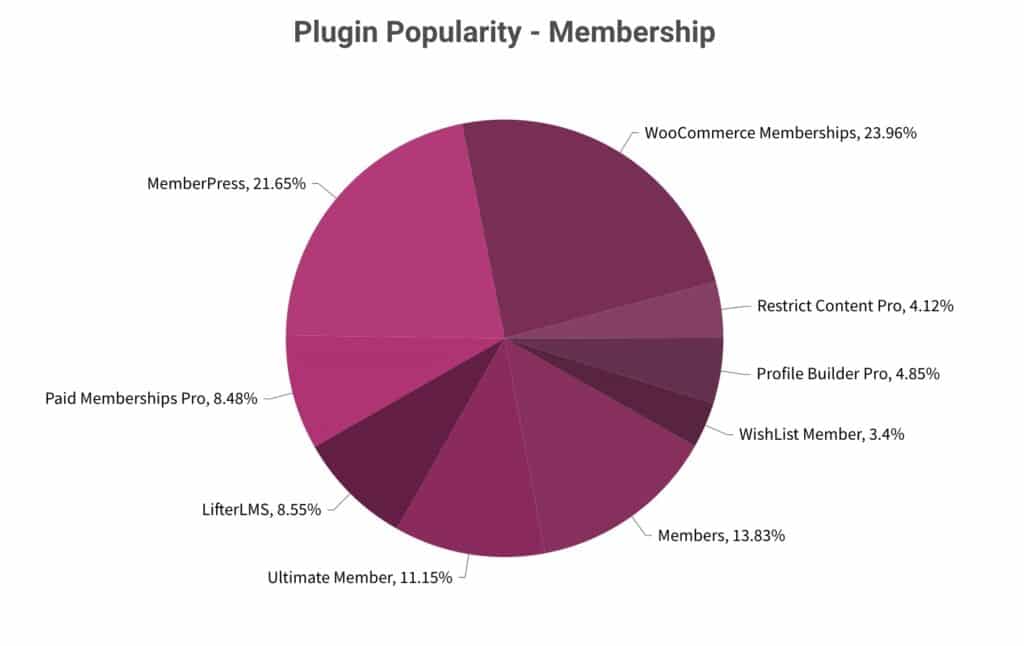
This year saw an increase in MemberPress and WooCommerce Memberships at the expense of Paid Memberships Pro, LifterLMS, and WishList Member.
#LMS
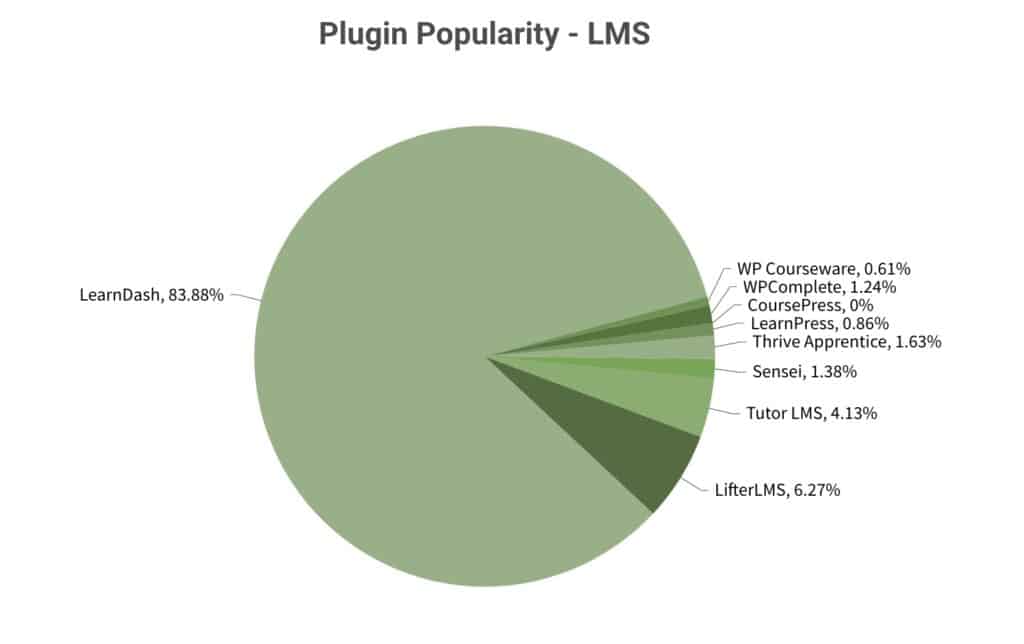
LearnDash is still the undisputed king in the LMS category, up to 83.88% in 2023 (from 82.21% in 2022).
#Forms
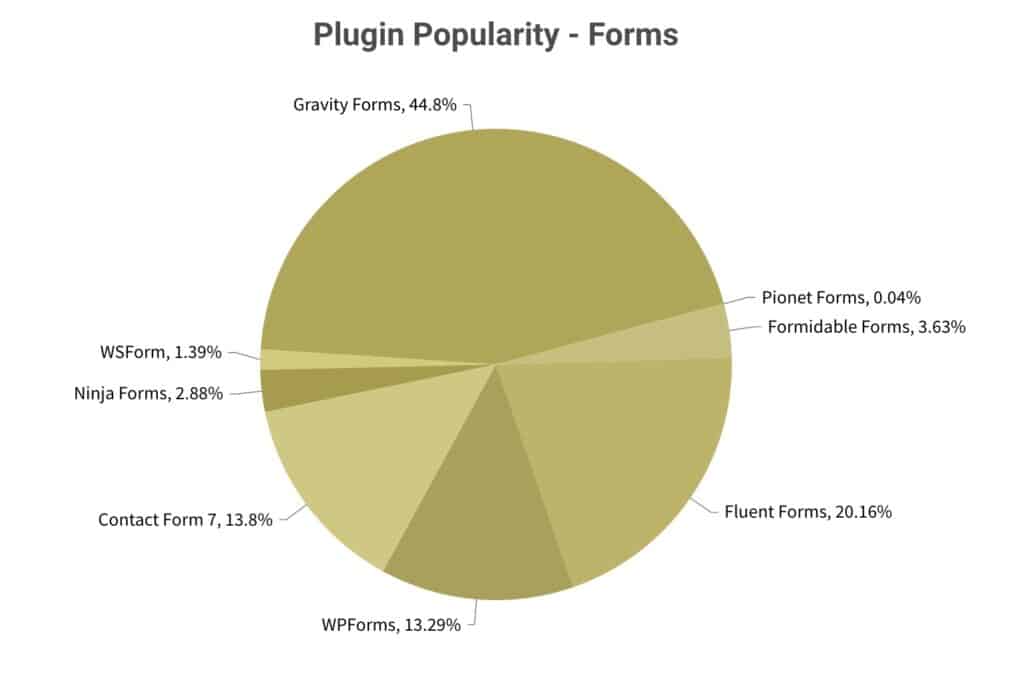
Gravity Forms is still on top in the forms category, up to 44.8% from 42% in 2022.
#Events and bookings
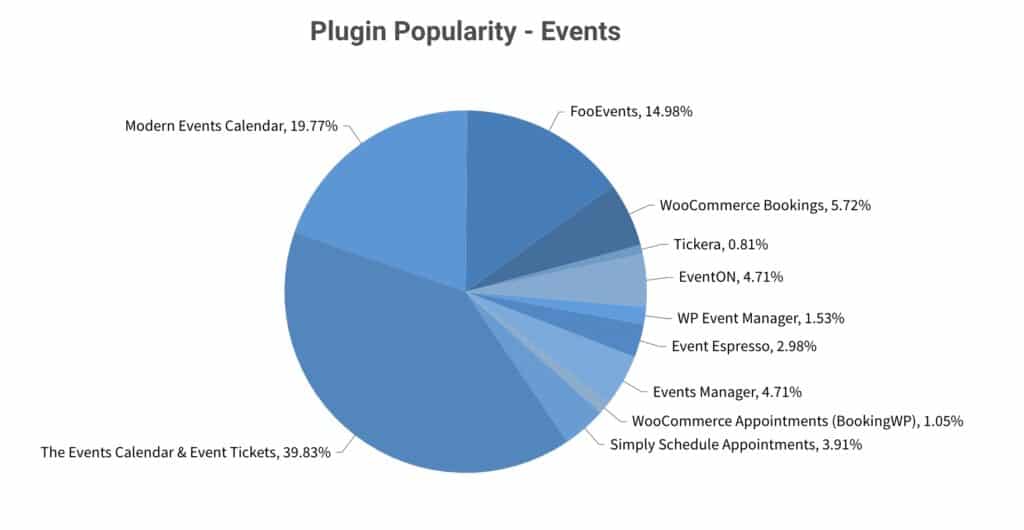
FooEvents had significant gains in 2023, up to 15% from 8% in 2022.
#Page builders
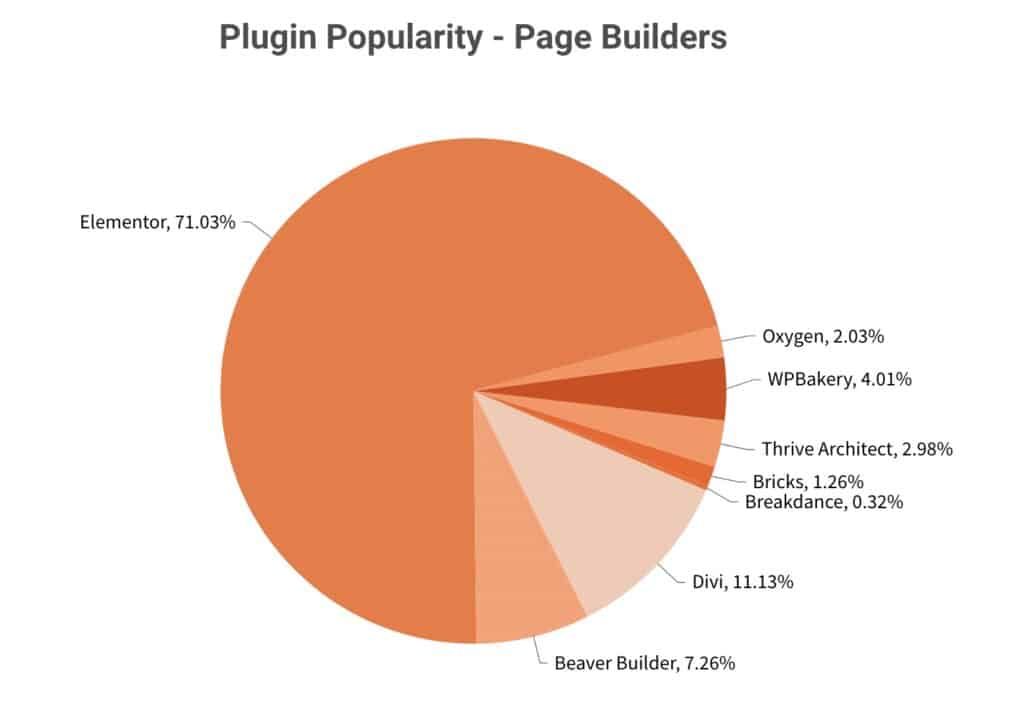
Elementor’s share declined slightly, from 76% in 2022 to 71% in 2023, though it’s still significantly more popular than any other page builder we support.
While we can’t detect directly whether someone is using the block editor as their only page builder, we can look at the percentage of sites that do not have any page builder loaded at all. Out of 20,886 sites, that number is 4,239— i.e. about 80% of sites use a page builder of some kind.
#Affiliates
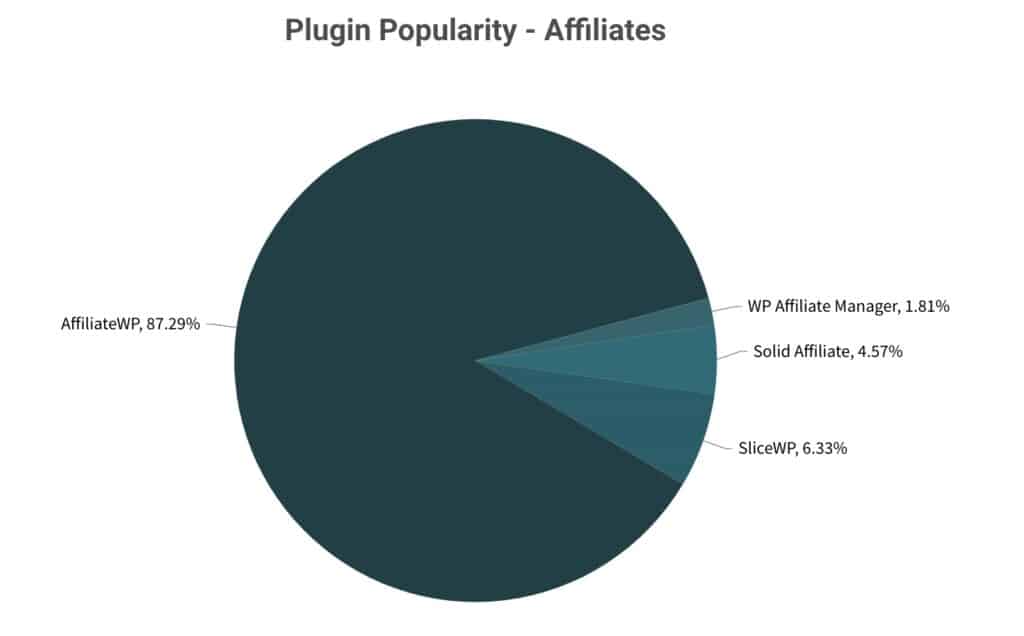
AffiliateWP had a long head start in the affiliate category, but I was happy this year to see both SliceWP and Solid Affiliate growing in popularity. The plugin ecosystem is healthier as a whole when there are a few options to choose from, rather than a single default provider.
#Custom Fields and Post Types
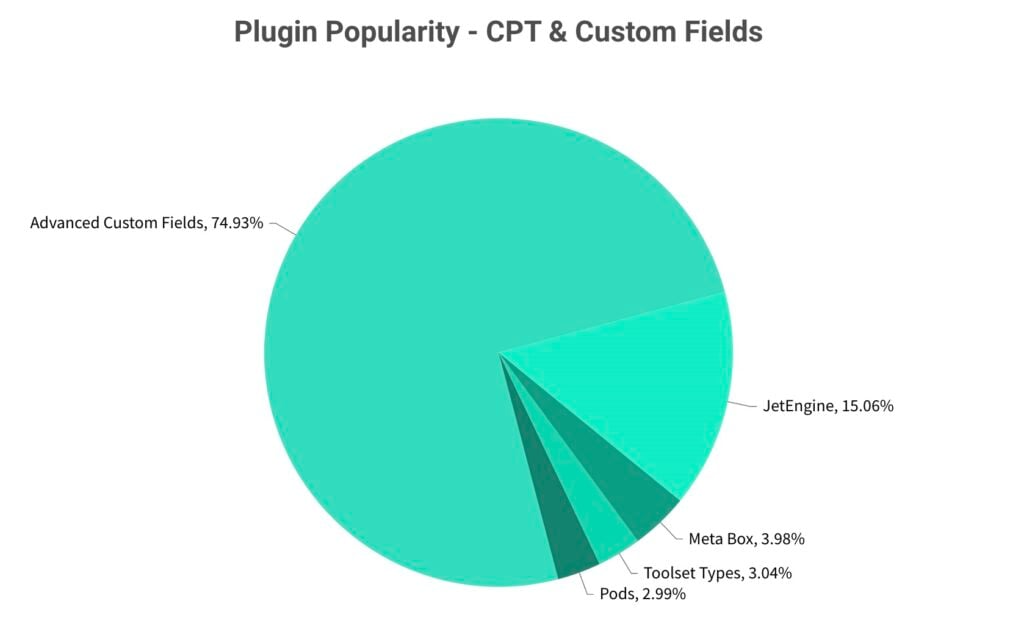
New chart for this year. What are folks using to manage custom fields and post types? Our integrations in that area aren’t exhaustive, but among the plugins we do support, Advanced Custom Fields is a clear winner.
#WP Fusion addons
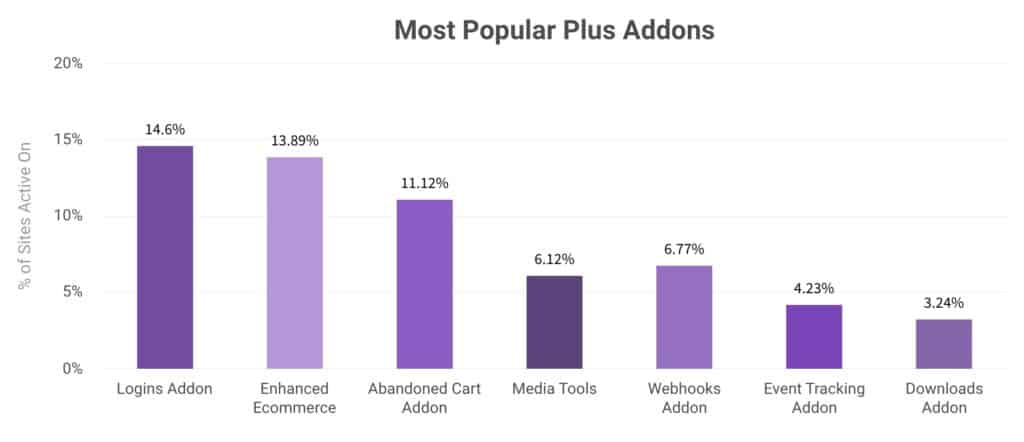
Same as last year, with Logins and Enhanced Ecommerce in the lead.
We added several new features to the Event Tracking addon this year, especially multi-key / value event tracking with supported CRMs. But multi-key events are still only supported by 11 platforms, so the update has been slow.
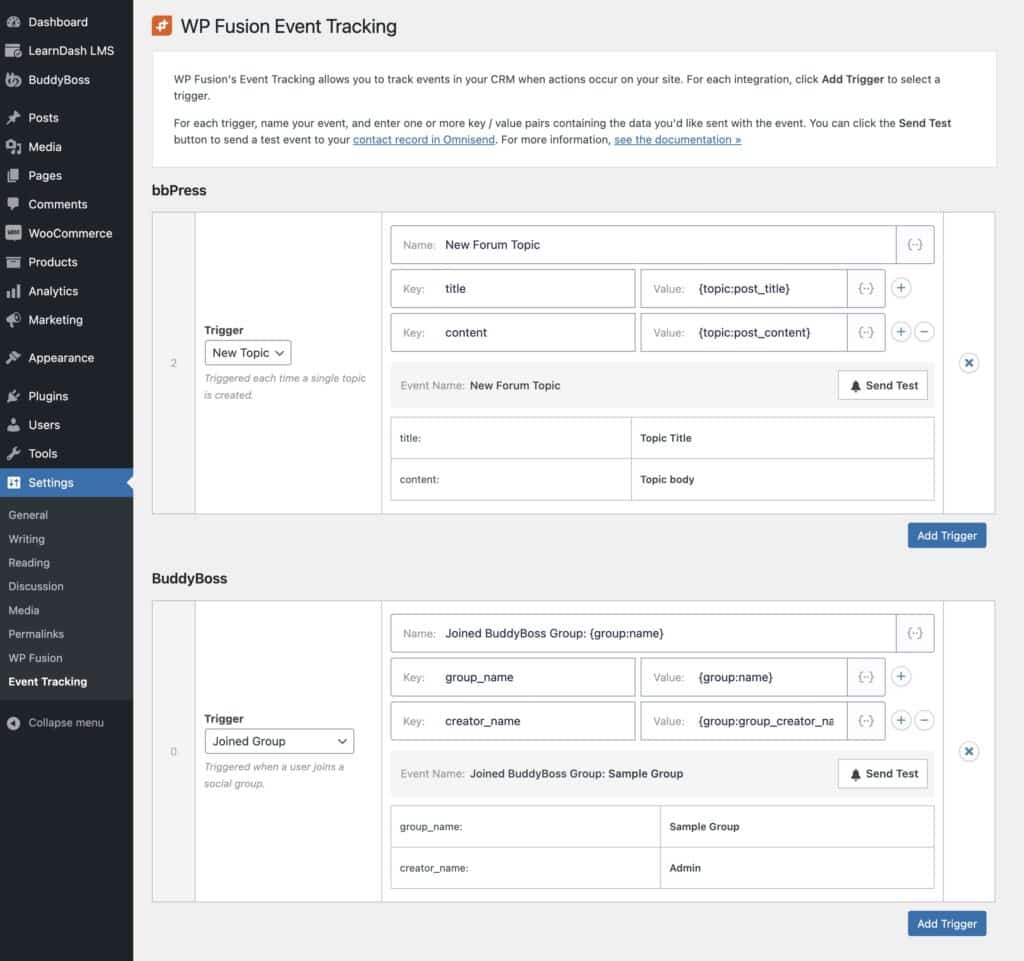
I’d like to put more energy into promoting event tracking in 2024.
#Revenue
Growth continued into 2023, with revenue up 7%, but new customer signups continuing to decline.
Summaries for WP Fusion in 2023:
- Net revenue: $800,635 (+7%)
- Refunds: $45,579 (+0%)
- Revenue from license renewals: $550,213 (+18%)
- Revenue from license upgrades: $17,115 (+6%)
- Subscriber lifetime value: $1,172 (+17%)
- Commissions paid to affiliates: $11,643 (+2%)
- New customers: 646 (-11%)
While it’s great to see revenue and lifetime value up, new customer signups are still headed in a downward trend.
Our growth rate in terms of monthly recurring revenue was also less even this year. The first half of the year saw incremental gains, followed by a pretty weak Q3, and breaking even in Q4.
#Renewal rates and churn
First-year renewal rates held about steady in 2023, at 61%.
(For more information on how we calculate this, see 2022’s post).
#Refund rates
Our overall refund rate went down in 2023 (as a percentage of revenue, see summaries above☝️), but refund rates for new customers went up from 6.1% to 7.2%.
I don’t have any insights into why that may have changed 💁♂️
#Black Friday + Cyber Monday
We only run one sale each year, for Black Friday + Cyber Monday. This year’s results followed the general trend, with revenue up (due to renewals) but new sales down.
- Net revenue: $67,152 (+24%)
- Average order value: $387 (+34%)
- New customers: 53 (-20%)
We had our best day ever on Friday November 24th, with $24,000 in revenue 🎉 (though more than half of that came from a single customer).
On November 24th a single customer purchased $14,000 worth of WP Fusion lifetime licenses 😳
I was waiting for a chargeback to hit, but it’s been two months, and none did. Guess it was legit 💁♂️
What’s the most you’ve spent on a plugin? 🤑
— Jack Arturo (@verygoodplugins) January 23, 2024
#Support
Support slowed down quite a bit coming into 2022, but kept the same level through 2023. Across email support (via FreeScout) and chat support (via Chatra) we had 4,217 support conversations (+3%), from 1,903 customers (-2%), with 9,046 messages received (-8%).
Now that we’re self-hosting our support portal, we can also build real time reports in AppSmith from our support data, similar to what we’ve been doing with our sales data.
I was interested to see how many support replies I’ve personally sent over the years, as well as the word count.

In 2023 I personally wrote 2,054 support replies (-9%), totaling 172,752 words (-17%). By comparison, The Fellowship of the Ring has 187,790 words 🧙
(My support output peaked in 2020, with 5,998 replies and 660,957 words. Significantly longer than the entire Lord of the Rings trilogy. Talk about burnout! 😩)
#Response times
Historically we’ve included stats on our average support response times. When we were using Help Scout, these were calculated based on our working hours (Monday to Friday, 8am to 5pm CET).
Now that we’ve moved to Freescout, we can’t limit the report to working hours, so the numbers have jumped quite a bit. For example our average first response time during working hours was 1hr and 49 minutes, but for 2023 that number is now 9hrs and 45 minutes 💀.
However, if you look at the report, you’ll see most of the increases have come in the 1+ day range, which probably means tickets we received over the weekend. We’re still replying to 65% of new tickets within 12 hours.
Our total resolution time per ticket was over an hour faster this year, averaging 14 hrs and 16 minutes, with 2.31 replies to resolve 🔥
#New customer support request rates
This is a tricky calculation but one I find especially insightful. We can cross reference license key purchases with support tickets and calculate the percent of customers who request support within the first 30 days after purchase, as well as the first year.
If the number is going down, this means users are finding the resources they need inside the plugin and on our website before they need to contact support (or it just means we released fewer bugs 🙈).
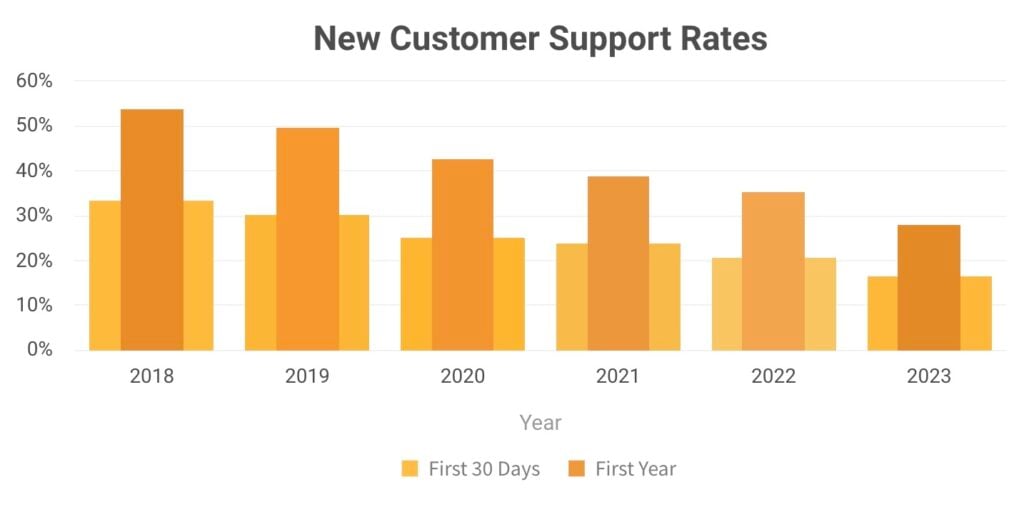
This year 17% of customers contacted support within 30 days of purchase, and 28% contacted support within the first year. A new record 🥳
#Feature requests
In 2023 91 feature requests (+2%) were submitted via our portal, and 41 were completed (-39%).
#Time

I spent 719 hours on WP Fusion this year, down from 788 in 2022 (-9%). I’m fortunate that I get to structure my year around the seasons— most of my “deep work” happens in the early spring and autumn.
The breakdown by project is almost the same as last year. Most of my time is still spent either doing support or working on fixes / enhancements that come directly out of support interactions.
In addition to myself, the team spent another 2,012 hours on support (+3%), 764 hours on development (+109%), and 18 hours on content (+∞).
#Reflections
It felt like we spent more time this year getting less done 🤔. There are a few possible reasons for that.
#Team growth
Henry joined the team as a junior developer in May. This involved a fair bit of training, but also documenting processes that had previously only been in my head.
Jess joined in October as a content writer, and this also required another set of processes to be formalized.
We’ve been making heavy use of Jira both for development and content planning, and using automation and templates to ensure tasks are completed to the same standard. This all took time to set up and optimize.
#WordPress is getting harder to develop for
I’ve been pretty transparent with my criticism of Gutenberg, the block editor, and Full Site Editing.
I don’t think I’m anti-progess— I love trying out new toys (WP Fusion was block-ready in 2018). But I think some of these technologies have been shoved into WordPress core with an, “engineer first, integrate later” mindset.
For better or for worse, WP Fusion was designed around the concept of integrating with WordPress “where you are.” As you edit your products, events, courses, and membership plans, WP Fusion adds settings allowing you to configure the data sync and triggers in your connected CRM.
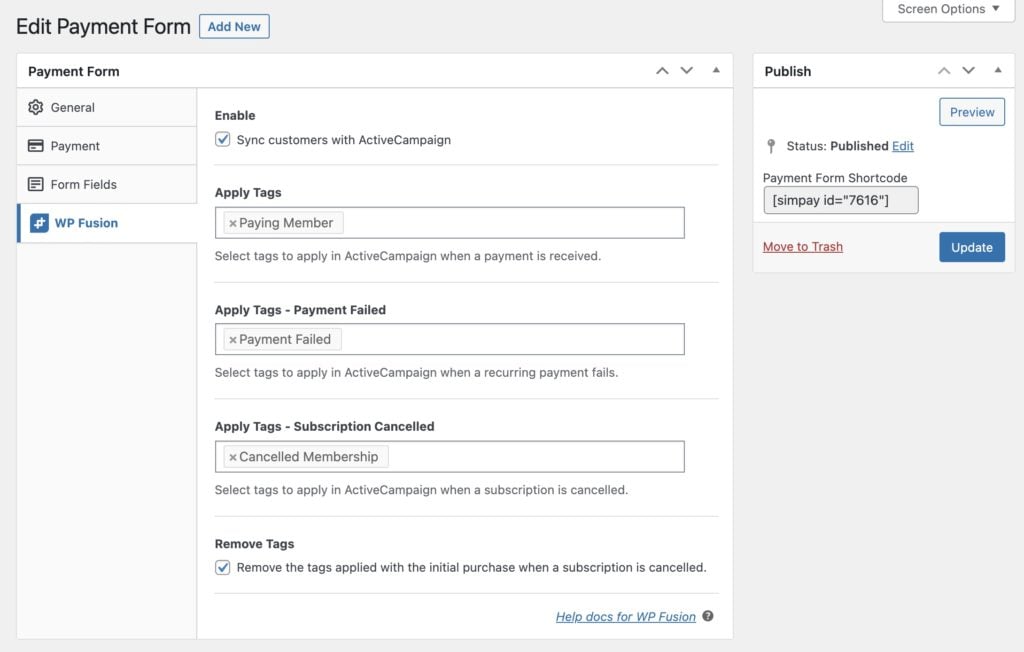
I think that this makes it fun to learn to use the plugin, and to learn marketing automation— you’re not overwhelmed with 1,000 options on a single screen, but instead you can discover them as you manage your site.
That worked well when WordPress was more of a content management system, where each piece of content had an title, ID, and edit screen, and they were stored and related to each other in the database.
As WordPress has shifted over the last few years into putting the visual editing experience first, we’ve seen many plugins also go “block-first”. Previously you might have created a new event ticket by going to Events » Add New, filling out the event details (including the tags to apply in your CRM), and publishing the ticket. The ticket could then be inserted into a page with a shortcode, or a link to add the ticket to the cart.
Now you can simply drag a ticket block onto your event page, add a price, and click publish ✅
This is great for someone who’s not comfortable navigating their website admin, but the “ticket” is reduced to some HTML comments and markup. It’s not a piece of “content” anymore, just a design element on a page.
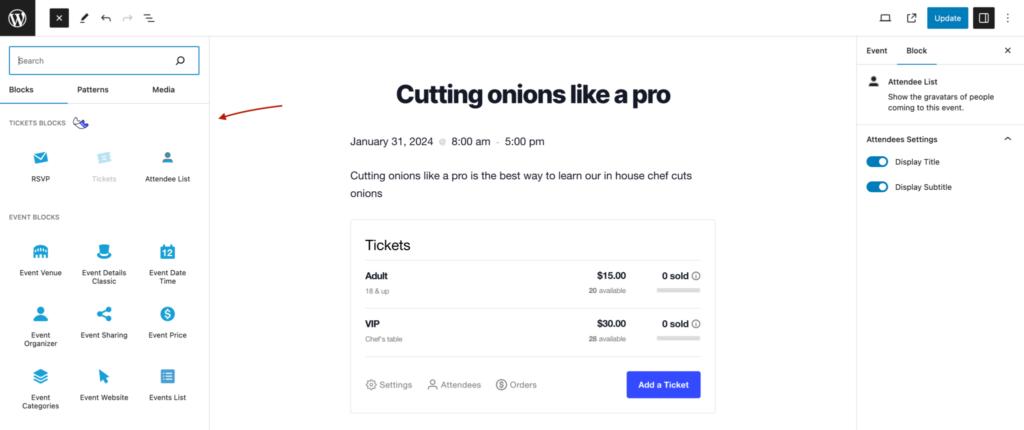
In some cases we’re able to extend custom blocks and re-add the settings that were lost, but this is more complicated than it used to be.
Premium plugins are generally released with just the minified distribution files for their blocks, not the source files that are used to compile them. Because no one can “read” the block code, or make changes and re-compile it, block developers also aren’t thinking about extensibility like they might have with PHP.
Where we might have once used an action hook like after_xyz_settings_panel to insert custom WP Fusion settings, we now need to contact the company in question, request the block source files, request hooks to be added at the relevant places, and then wait for their (hopefully timely) acquiescence.
This can be seen in the time spent on two membership plugin integrations with similar functionality we completed this year, WP User Manager and SureMembers.
- WP User Manager uses a “traditional” admin with a post type and meta boxes. The integration was completed in 6 hours over the course of one week 😌
- SureMembers uses the block editor. That integration took over 55 hours and four months to complete 🤯
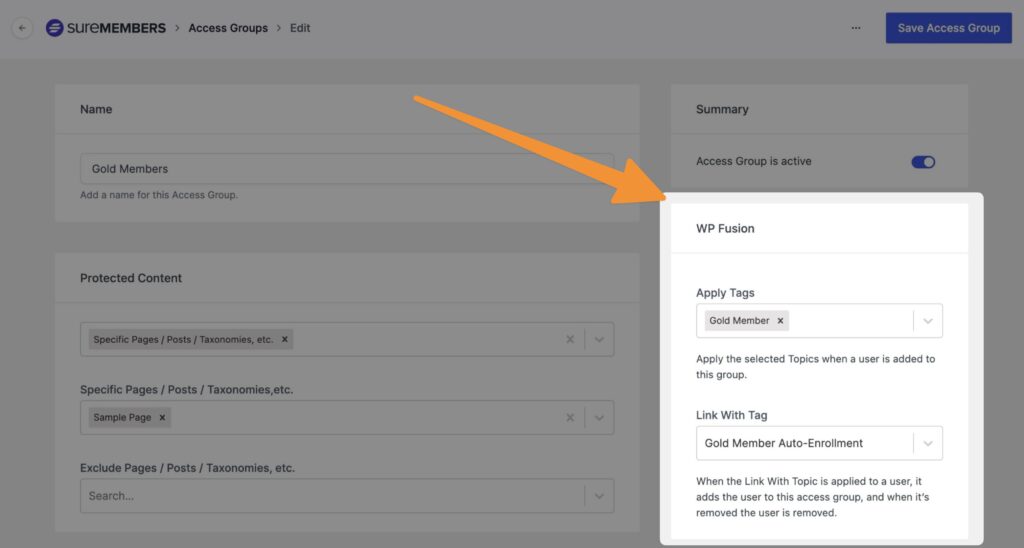
We had enough interest from our customers in a SureMembers integration, and the full support of Brainstorm Force (thanks especially to Vijay and Sujay! 🙏), so we were able to make this happen. But that won’t be the case for every plugin.
So what can we do?
Ultimately, we’re going to lose the fight with the block editor.
It won’t be practical to maintain integrations with 120+ plugins and innumerable blocks, all with their own dependencies and build processes, and to keep those from breaking with each update.
So we’re working on updating our integrations so that they can be managed centrally, instead of inside the existing interfaces. That way if, for example, the WooCommerce product editor switches to blocks (or WooCommerce products become blocks 😨), you can still manage the tags to apply in your CRM via the main WP Fusion settings page. This will give us full control over the user experience, without having to worry about things like the upcoming and ill-defined admin redesign.
This would also give us the ability to separate WP Fusion from WordPress entirely. For example to offer a version for Shopify or other platforms, or to move the data processing out of WordPress, and charge monthly like a SaaS.
It does make me a little sad, as someone who got started in web development by picking apart WordPress plugins line by line and seeing how they worked, to now see many plugins becoming more like standalone web apps, embedded into the WordPress admin. But complaining about it gets us nowhere, so we’ll adapt 💪.
#Price increases
2023 was crazy for prices 😵💫. High interest rates increased the cost of borrowing, reducing the pool of venture capital, and it seems like a lot of companies realized they needed to get profitable.
For WP Fusion we had both Help Scout and ActiveCampaign significantly increase prices, with our HelpScout bill doubling, and our ActiveCampaign bill about to go up by 400%.
I was getting tired of trying to keep our user seats and subscriber counts down to try and avoid hitting the next pricing tier, so we brought both services in-house. In August we switched from Help Scout to the self-hosted FreeScout, and in November we moved from ActiveCampaign to FluentCRM.
Both moves were complicated, and required some custom development to replace lost functionality. The FreeScout migration took 53 hours, and FluentCRM took 86 hours. But, we’ll save about $4,000 / yr in software costs, and now we have full control over our data (and can use it to build y’all more charts! 🤓)
#WordCamps
I wrote last year that I wanted to attend more in-person events, and I did it! 🎉. I traveled to WordCamp Europe in Athens in June, and WordCamp US in DC in August, where I got to meet up with almost all of my mastermind group in person (minus James Kemp 😢).

We’d planned one lunch together the Tuesday before the conference started, and ended up spending the entire week doing almost everything together. We’ve been meeting now bi-weekly for over four years, and this group has really come to feel like my extended family 🧡
If you haven’t been to a WordCamp, Katie Keith at Barn2 plugins put together this video recap of WCUS 2023, which I think perfectly captures the spirit.
(I also highly recommend reading Katie’s year in review + transparency report, over at the Barn2 blog).
I really enjoyed meeting Rytis and Rokas from Omnisend at the Rocket.net WP-Includes Summer Fest party. We got the ball rolling on an Omnisend + WP Fusion integration shortly after, and we just launched it this month. Omnisend has some great email marketing features for ecommerce sites, and they’ve just entered the WordPress space with a WooCommerce integration. We’ll be publishing a full review on what you can do with WP Fusion and Omnisend in the coming weeks.
I had so much fun at both WordCamps that I was inspired to apply for WP Fusion to sponsor to WordCamp Asia 2024 in Taiwan, and we were accepted! 🇹🇼
#What’s next
What’s coming in 2024?
- Content: 2024 is going to be the year of content. We’re going to start publishing on our blog again regularly, writing more tutorials and reviews, revive our newsletter, and re-design our onboarding campaign from the ground up.
- Development pipeline: There are a lot of bottlenecks right now in terms of how features get planned, delegated, and quality controlled. I want to build on the process automation we did in 2023 by fully automating coding standards compliance, and also delegating the process of reviewing, approving, and scheduling feature requests.
- Price increase: We haven’t increased our prices since 2015, even as many costs have gone up. We’ll probably aim for a 10%-20% price increase on new annual plans, sometime in the next month or two. Existing customers will, of course, have their original signup prices honored in perpetuity 🤞. I also want to A/B test and see if the pricing changes perform better when presented as monthly prices vs. annual.
- WordCamp Asia: I have two suitcases full of swag already packed and ready to fly to Taipei for WordCamp Asia 2024. Come by the WP Fusion booth and make sure to grab a pair of our signature WP Fusion socks! 😎

That’s all I have for this year. Thanks for reading, and here’s to another great year together! 🍻
– Jack
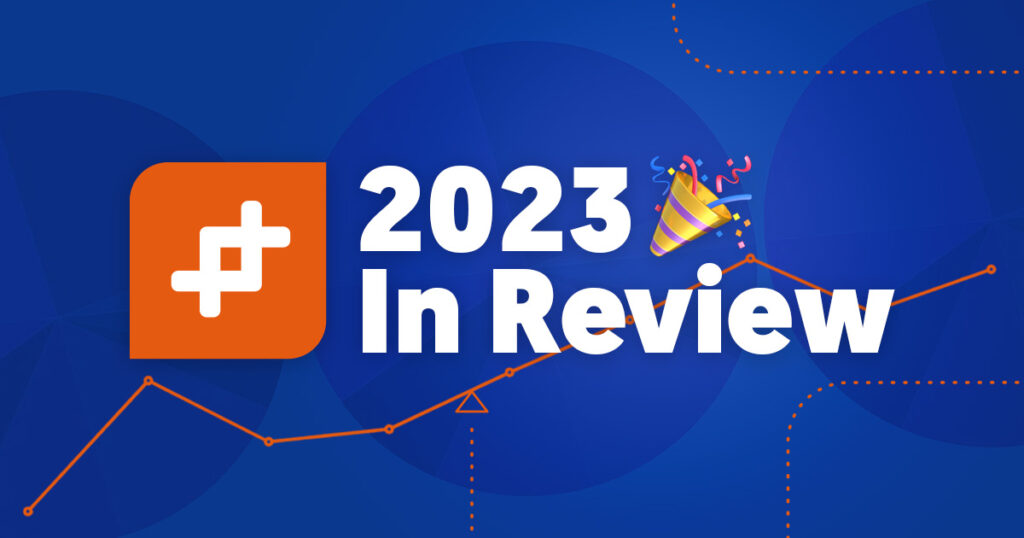
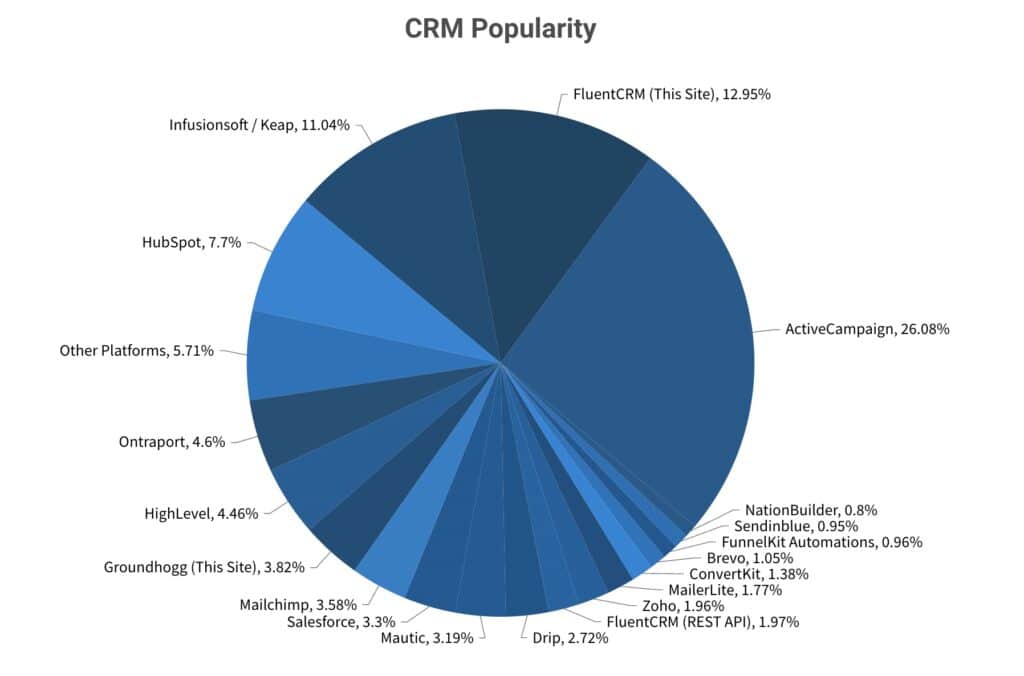

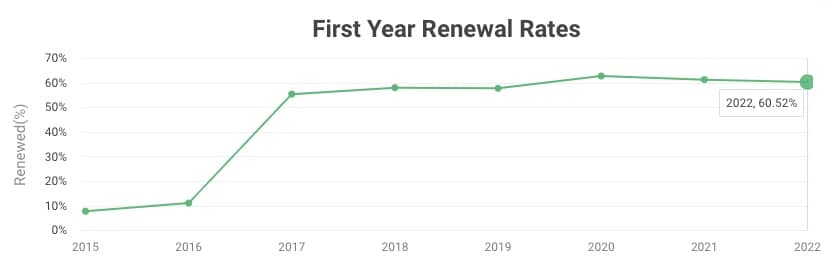
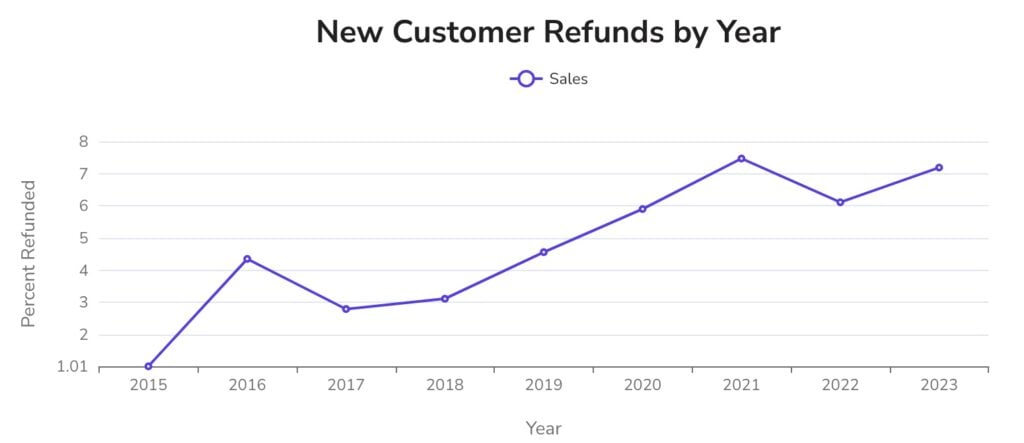
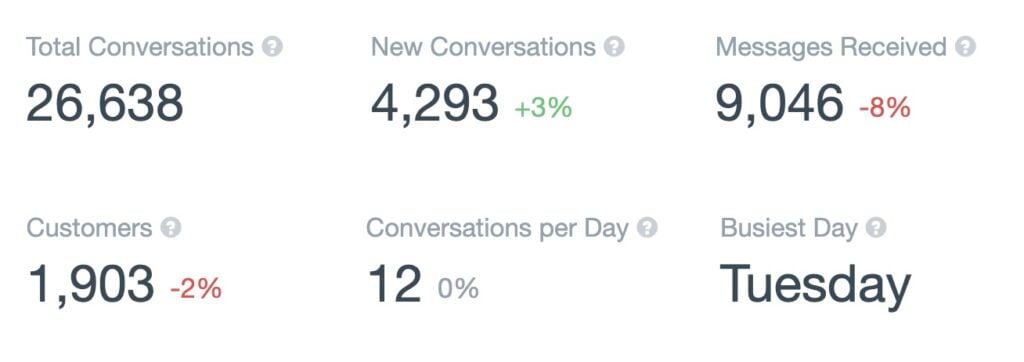
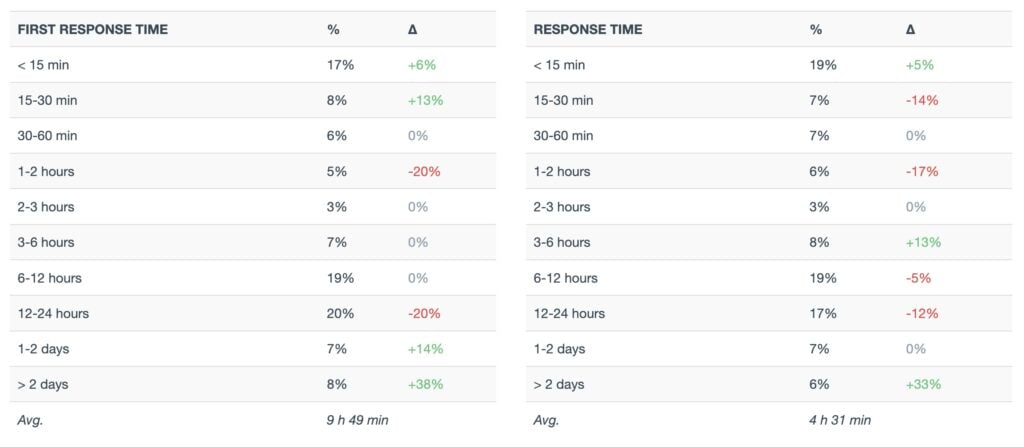
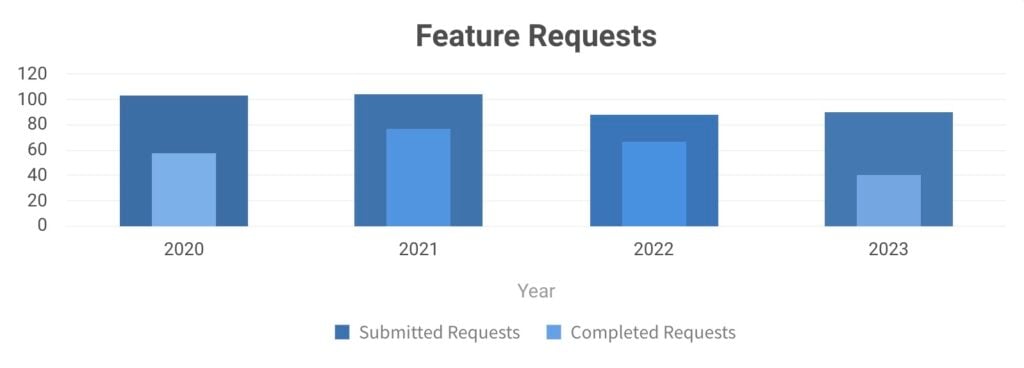
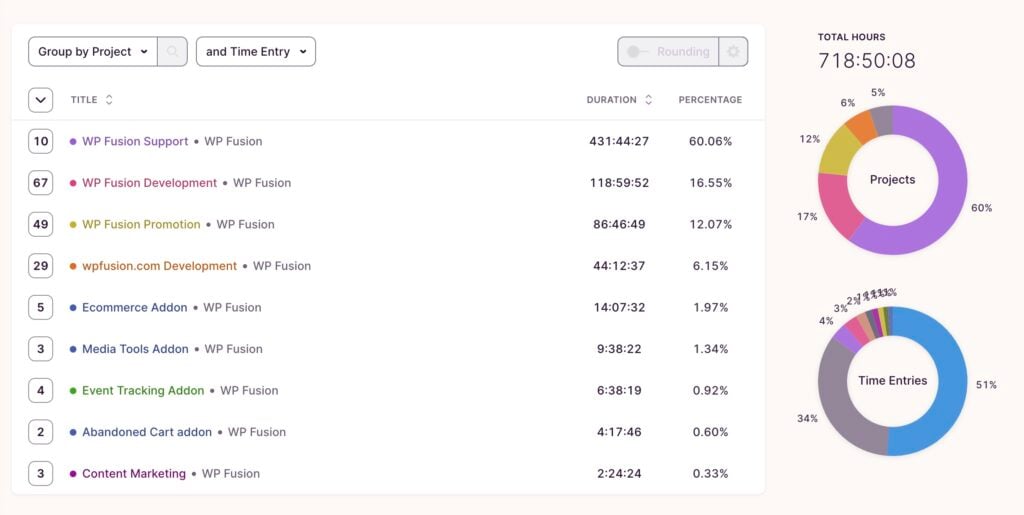

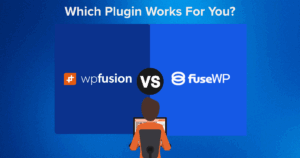

1 thought on “2023 in Review”
I ve just totally enjoyed reading your recap of 2023 with a fresh brewed Astra German beer:-) Next round is on me if I can make it to Word camp Asia 2024.
Cheers